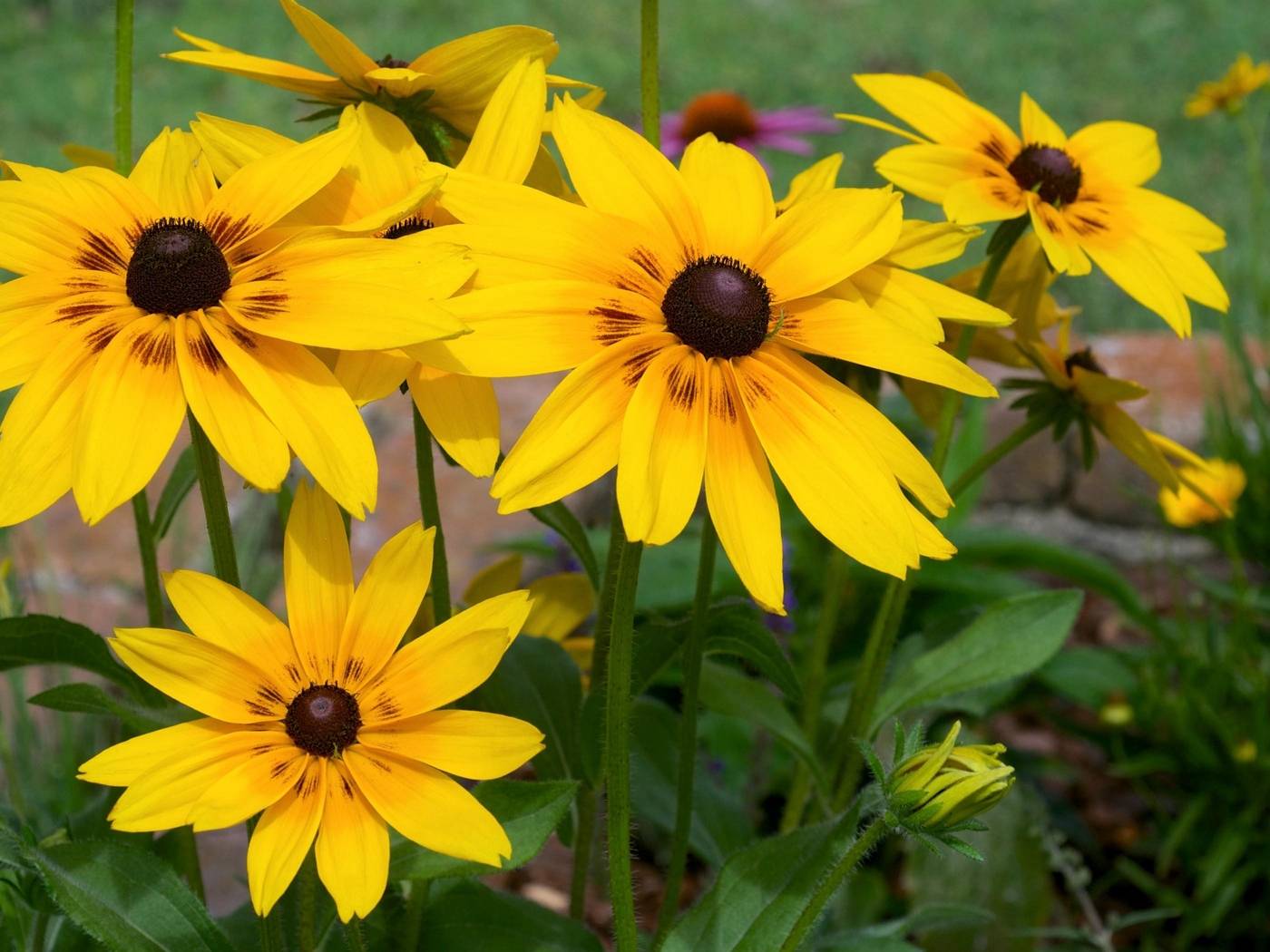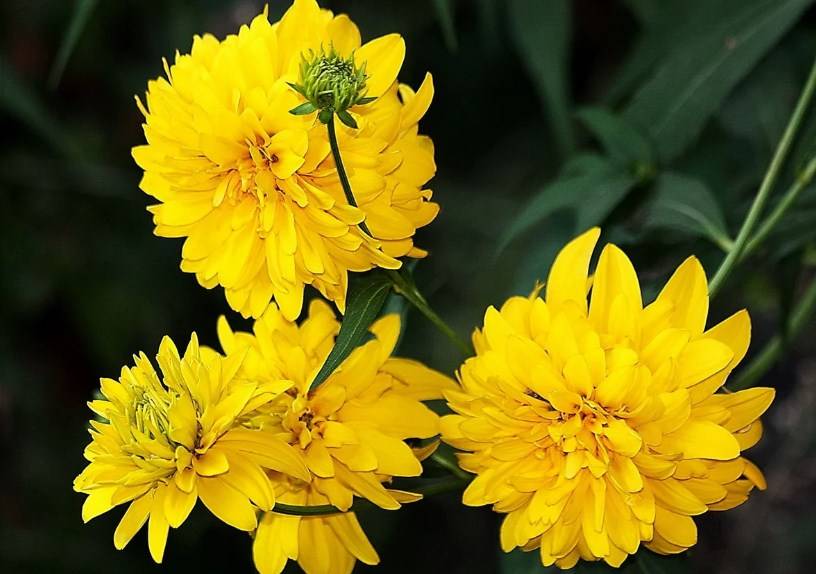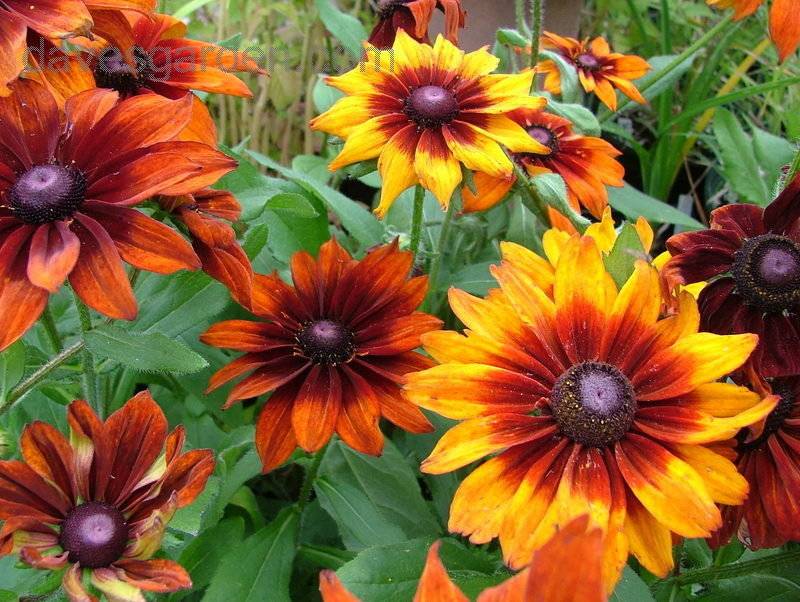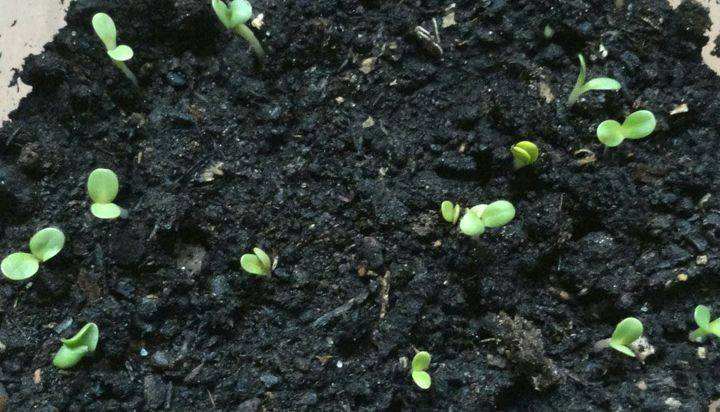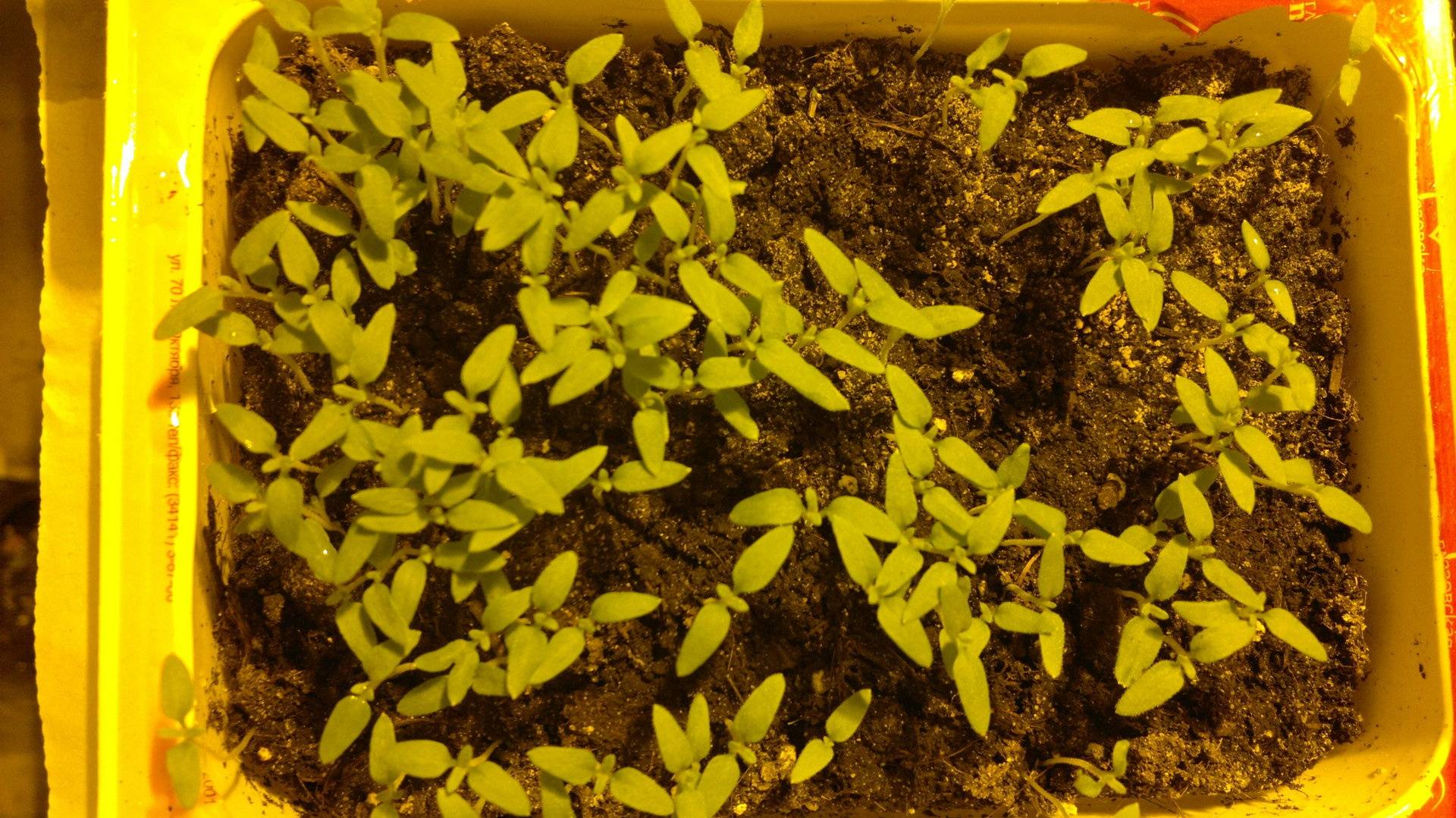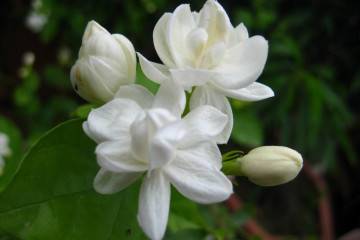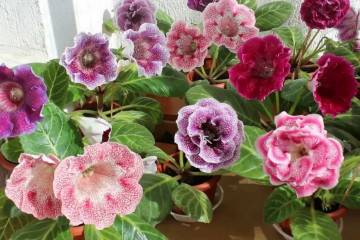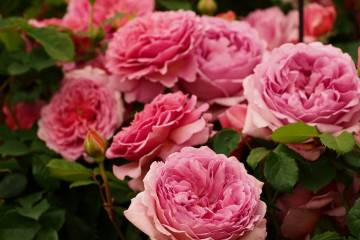Perennial rudbeckia - how it blooms, popular varieties
Content:
Rudbeckia flowers will help to decorate the site, balcony or windowsill. Their bright appearance will not leave the owners indifferent, and a wide variety of varieties will help to create a unique pattern of plants. The plant is relatively unpretentious and can live up to 5 years. Its landing is a good option for those who want to "make beautifully" for a long time.
Perennial rudbeckia
Botanical information says that perennial rudbeckia belongs to the Aster family. It is widespread in the wild and only a small part of the perennial rudbeckia species are cultivated as ornamental. Without constant care, these flowers easily run wild and lose their well-groomed appearance.
The origin and appearance of the flower
The decorative rudbeckia flower first caught the eye of European settlers who were exploring North America. They also brought the plant to Europe, and then to North Africa. One of the first varieties was yellow rudbeckia, then other colors appeared. A characteristic feature of the flowers are large baskets with bright petals. The middle of the flower is always dark (black or dark purple), which explains the first name of the flowers - black-eyed Susan. The average height of decorative varieties is up to 50 cm, wild ones can grow up to 3 m.
Description: what rudbeckia looks like
The plant looks very bright: basket flowers are always large, the shape of the petals depends on the variety. Color - shades of yellow and brown, there are varieties with burgundy petals. The black core is an optional feature, some varieties do not have it, and the petals are colored the same along the entire length. The stem most often branches, reaches a height of 50-60 cm, erect, but thin, in many varieties it needs props.
The best varieties of perennial rudbeckia
The annual rudbeckia has not gained as much popularity as the perennial variety. There are also biennial plants, but they are inferior in prevalence to perennial varieties. Planting perennial rudbeckia and caring for it is troublesome, but the result will pay off for several years.
Rudbeckia dissected (Rudbeckia laciniata)
This is the most widespread variety in our country. Has a bright yellow color of the petals, tolerates low temperatures well. The golden ball is a frost-resistant variety, distinguished by its high height (up to 2 m), but thin stems that need supports. It winters well without additional insulation in almost any climate, except for the Far North. The Goldquelle variety is smaller in size, slightly more demanding for winter insulation, but does not need props.
Western rudbeckia (Rudbeckia occidentalis)
This variety is distinguished by its special appearance.She does not have ligulate flowers (those that are usually called petals, although they are independent flowers). There is only an elongated black or purple-black core. Large black flowers will look spectacular as a complement to other, more delicate plants.
Giant rudbeckia (Rudbeckia maxima)
This flower grows in tall and branched bushes decorated with golden baskets. The flowers are not very large, but this is the case when quantity turns into quality - there are a lot of them. Golden inflorescences with dark centers look great on their own or in combination with other plants.
Rudbeckia lustrous (Rudbeckia nitida)
The glossy variety is distinguished by a small number of yellow petals and a large black-yellow heart. The name was given for the characteristic feature of the petals - a glossy sheen. Bushes grow up to 2 m in height and need additional support.
Beautiful or beautiful rudbeckia (Rudbeckia speciosa)
Compared to the previous varieties, this is a low-growing variety, the plant height is only 50-60 cm. There is no need for additional supports. The flowers are yellow, with a lot of petals. The core, like most rudbecky, is black, does not rise above the flower, the inflorescences are large.
Popular varieties of hybrid rudbeckia (Rudbeckia hybrida)
Hybrid plants combine the best qualities of the main types of rudbeckia - shiny, dissected and glossy. The bright appearance is combined with good resistance to various weather conditions.
Gloriosa Daisy
This plant can be either annual or perennial. Flowers have a wide color palette - from the usual yellow-orange to brown, cappuccino or cream. Reed flowers can have a double color - darker at the base and light closer to the edge. The border between the differently colored areas is clearly visible. This makes Gloriosa Daisy one of the most beautiful rudbeckia varieties.
Double Daisy
This type of plant is distinguished by a large number of reed flowers. It cannot boast of such a wide palette as the previous hybrid, but it pleases the eye with large inflorescences. Branches profusely, gives large leaves.
Annual rudbeckia varieties
Annual and biennial varieties have a more varied color, but do not have the vitality of a perennial. On the basis of some of them, very beautiful hybrids are created.
Hairy rudbeckia (Rudbeckia hirta)
Rudbeckia hirta reaches a meter in height, weakly or does not branch at all, is closest to wild ancestors. The flowers are bright yellow, with a well-defined dark core.
Rudbeckia bicolor (Rudbeckia bicolor)
A bright variety is the two-color rudbeckia. Its ligulate flowers are double-colored - orange or red at the base and yellow at the edges, which is the reason for the name.
Rudbeckia grasping (Rudbeckia amplexicaulis)
This plant is similar to the previous species. The petals are red at the base, yellow on the outside. Unlike most other varieties, the reed flowers are directed downward.
Rudbeckia triloba (Rudbeckia triloba)
The tallest annual is up to 1.4 m. Yellow or purple rudbeckia with erect stems that do not need additional supports. It owes its name to large leaves with three lobes.
Growing rudbeckia
Glossy or terry rudbeckia can please the eye for more than one year. It survives the winter well, so it does not require additional insulation. Rudbeckia flowers can be planted at their summer cottage without fear. There are several ways to do this.
Growing by seeds in the open field
In relatively warm climates, seeds can be sown directly into the flower bed. They can be bought at the country store or collected in the fall of the previous year.The time for landing in the ground is the end of May. The main condition is the absence of frost on the soil, the night temperature should be above +5 degrees.
To successfully grow yellow flowers, you need a soil rich in nutrients, good water permeability, and good lighting. The plant does not take root well in the shade of trees, but can survive a short shade from the bushes (for example, they are on the south side and their shadow covers young bushes for a short time during the day).
Growing from seedlings
This method is chosen in cases where a cool summer is promised, as well as for regions where the weather is capricious in any season. Only plants that have already taken root are resistant to the cold, and young seedlings must be protected from frost and the best place for this is an apartment.
Seeds for seedlings are sown at the end of March-April. They are planted in boxes with a substrate and covered with foil. Taking care of crops is simple: the soil needs to be watered or sprayed with a spray bottle as it dries, and regularly ventilated when condensation forms. The sprouts appear in 1-2 weeks.
Young sprouts require the same care as seeds - watering, spraying and airing as needed. After each plant has 2 leaves, they need to be planted in separate pots.
Before planting rudbeckia seedlings in the open field in spring, they must be hardened. For this, boxes with seedlings are subjected to a short-term exposure to low temperatures. To begin with, future "golden balls" are taken out on a balcony or windowsill under an open window for 1-2 hours. The duration of the procedures is constantly increasing, by about an hour a day.
After establishing a stable above-zero temperature (at the end of May), the seedlings are planted in open ground. You can additionally cover it at night. The advantages of this method are that the bushes will take root faster and will please the owners with flowers in the first year. There is also less risk that a sudden deterioration in the weather will harm the plant.
Caring for flowers in the garden
Garden rudbeckia is considered unpretentious, but, nevertheless, needs care. It needs to be watered regularly, protected from pests and fed. For tall views, additional supports are required.
Watering frequency depends on the weather. In dry summers it is necessary to water more often, after rain it is not necessary. An indicator that it is time to water the plant is dry soil at the roots. Time for water treatments - morning or evening. It is advisable to loosen the soil under the roots every time.
The plant is fed with potassium-based mixtures, the best option is Agricola. The first feeding is carried out before planting, the next one after two weeks. When the rudbeckia is in bloom, it is advisable to do another fertilization session. If the soil is poor in nutrients, this should be done more often.
Reproduction of rudbeckia
Reproduction takes place in two ways - by dividing the bush and by seeds. Each of them has significant advantages and disadvantages. Dividing the bush allows you to get hardened plants that will quickly begin to bloom and will not suffer from the vagaries of the weather, and will winter well.
Reproduction by dividing the bush
This method is recommended for breeding terry species, for example, Rudbeckia Marmalade. Its description is simple enough:
- Produced in spring, when the first shoots with leaves hatch, or in autumn after flowering.
- Rhizomes and shoots are removed from the ground, divided into the desired number of parts.
- Each piece is planted in a chosen location.
- The procedure is repeated every 3-5 years.
The purpose of vegetative propagation is to preserve the beautiful appearance of the bush.
Seed propagation
This method is used for all types and varieties. Amber-colored annuals reproduce by self-seeding. As they ripen, the seeds are scattered over the site, and seedlings appear the next year. Perennial species cope with this task somewhat worse, but they can also bring a lot of trouble, not wanting to grow where the owner decided.
The seeds are harvested in the fall after flowering. So that they do not scatter in a mess, the flowers are cut and put into a container.
Rudbeckia is a golden flower that delights summer residents with its appearance and does not require outstanding knowledge of gardening. Many of its decorative varieties have been bred, including light, almost white flowers. If you don't follow the bushes, they will easily take on a close-to-wild look. In its homeland in North America, this plant is a wild grass that reproduces well by self-sowing and survives without human help.
